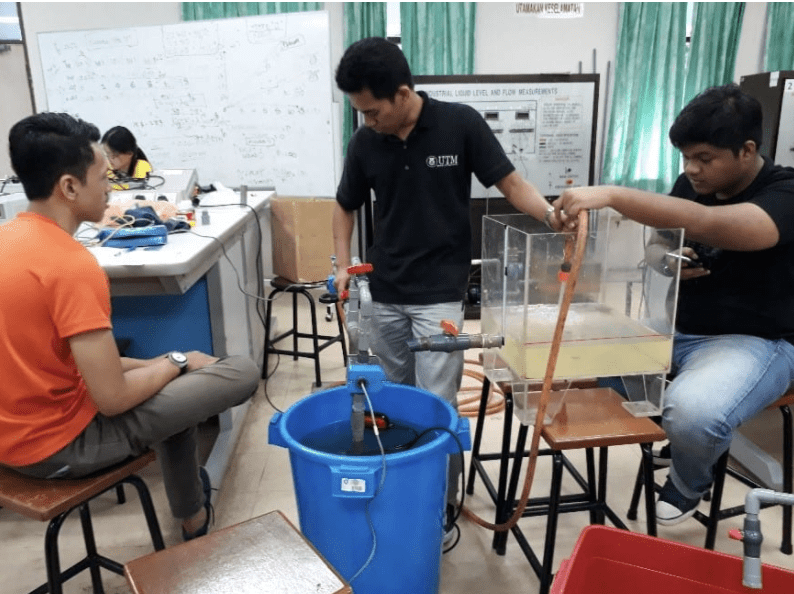Authored by: Ir. Dr. Shafishuhaza Sahlan
In this article, the direction of the research work presented is towards achieving smart automation system through the implementation of IoT. As a fellow member of CAIRO UTM, the leading COE in AI, Robotics and Automation, the researcher has considered automation as the best way forward for an efficient water distribution system, represented initially by a liquid level system.
In the process industry, liquid level system is commonly applied in the food industry, water industry even in the oil and gas industry. Each application comes with a stringent requirement complying to each of the industry’s security level. As an academician, to instill the importance of process system in the industry, an initiative on salvaging usable components from obsolete experimental setup in the university was initiated in 2017 in the Industrial Process Control (SKEE4173) class with the help of a good colleague, Tuan Hj Mohamad Shukri Abdul Manaf as well as an unofficial industrial collaborator from ZEC Engineering Sdn. Bhd, a control system expert company. The obsolete experimental set-up was a water level system. The initial salvaging works are shown in Figure 1 and Figure 2.
 Figure 1 | 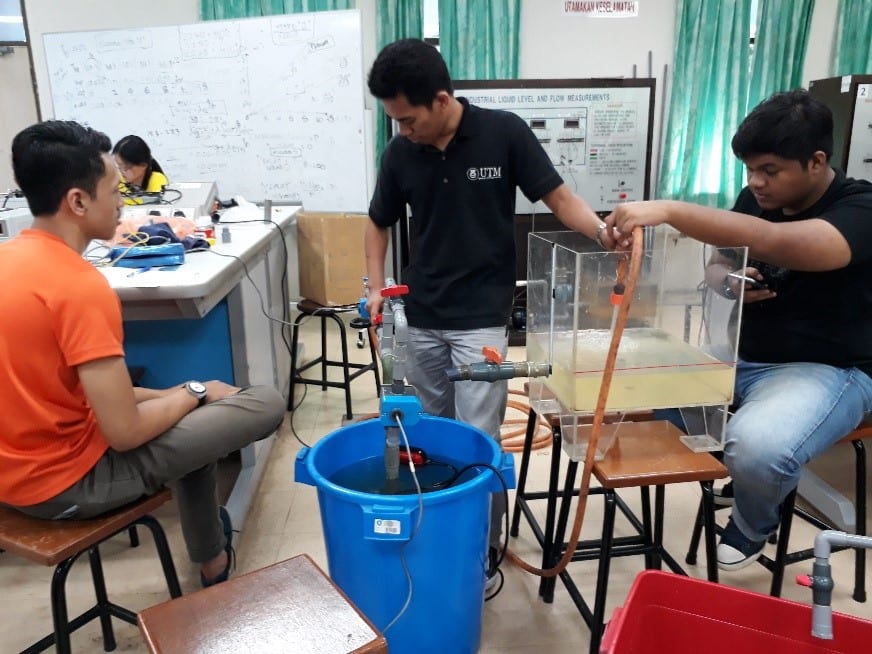 Figure 2 |
The components taken from this obsolete experimental set up include three 3-phase 0.75kW motors, two variable speed drives, two flow rate sensors and two LVDT sensors for water level. In addition, the water tanks as well as the base of the experimental was cleared and re-used as the new system. Before re-using them, the components were tested to ensure that they were operational. Water tanks were modified and re-arranged on the existing set-up, all done by the final year students. The three 3-phase motors were serviced by ZEC Engineering Sdn. Bhd. prior to system set-up. Once the motors were fully serviced, they were then connected to the newly designed laboratory-scaled water level system set-up. The connection of these components was figured out before-hand, i.e. before the final installation of the system, along with pipes installation. Finally, the water transfer process of the newly-design water level system was tested. Yes, all processes involved these final year students, and everyone was contented having the opportunity to be involved.
The final first-phase water level process system fabricated is shown in Figure 3 (2017), which was later upgraded to Figure 4. From figure 4, the level sensors were replaced with an e-tape level sensor (from an LVDT sensor). In addition, a new set of incoming and outgoing flow rate sensor were also installed. In figure 4, the automation in the system was observed in maintaining the water level in the reservoir tank.
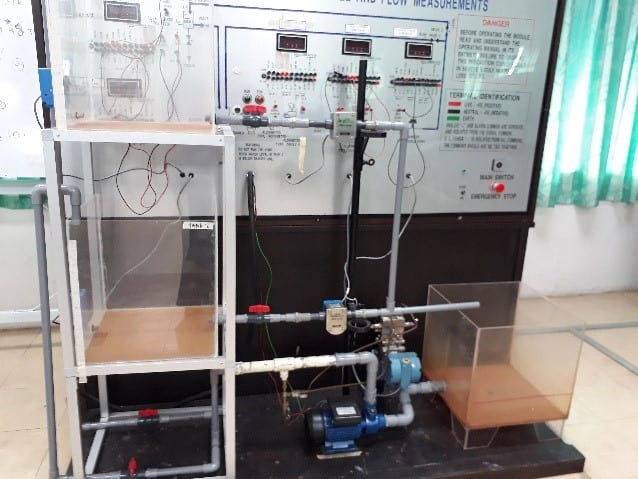 Figure 3 | 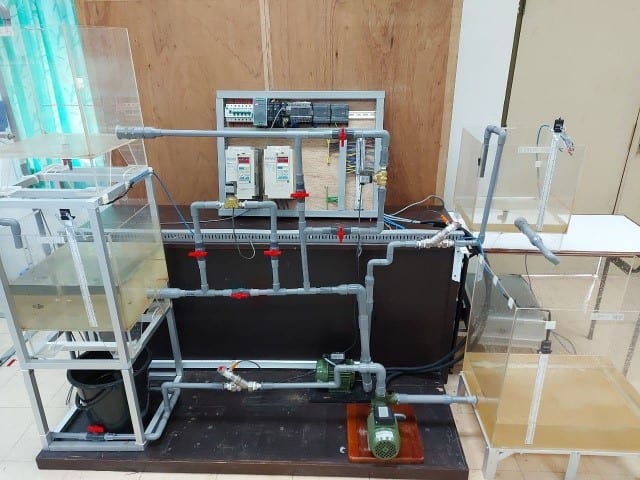 Figure 4 |
The water level system was designed loosely based on a water distribution system applied in the water industry. Hence a collaboration with the local water utility company was initiated with Ranhill SAJ Sdn. Bhd. (Figure 5, Figure 6 and Figure 7). The aim of Ranhill SAJ Sdn Bhd is towards improving the performance of water services locally, hence the collaboration is imminent.
Figure 5
Figure 6
Figure 7
Since then, the automation of the system has been upgraded, where now it is connected to an HMI which allows real time monitoring and control. The system is currently able to be automatically controlled by a PLC OMRON CPH1 through a CX Programmer ladder diagram. Figure 8 shows the latest programming of the automation part of the system in ladder diagram.
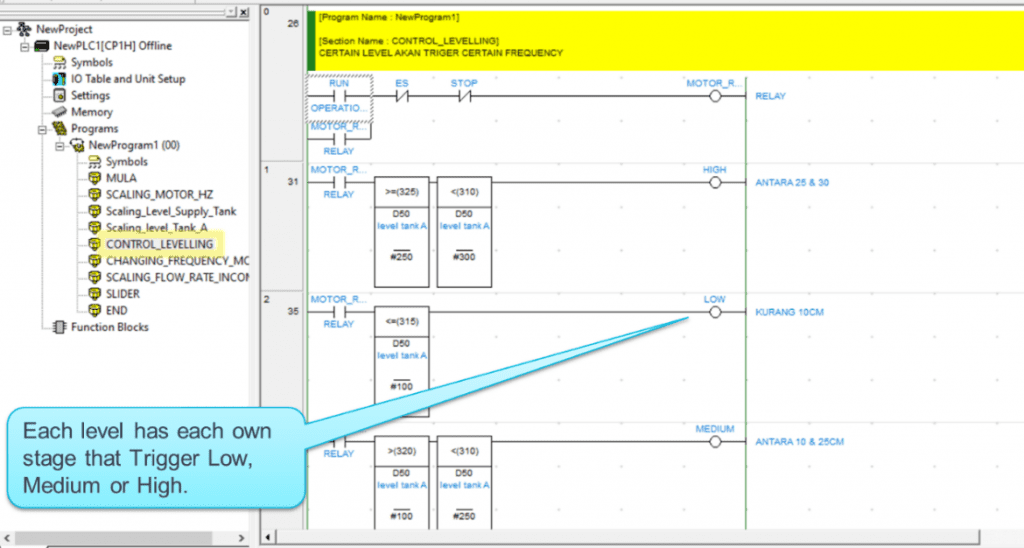
Currently, the system can be monitored and control on OMRON CX-supervisor (Figure 9). Hence the water level system is a complete SCADA system, which represents a real-life water distribution system.
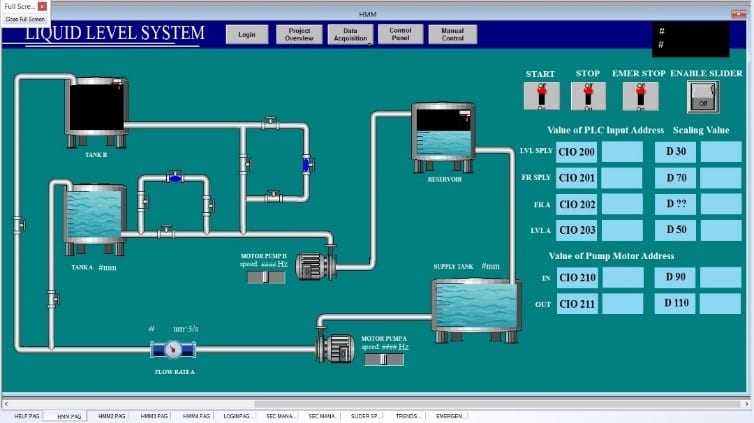
These data were collected within 1 second interval, hence system modeling of the system can be implemented, whereby the reservoir tank was controlled. The first mathematical modeling attempt was successful in establishing the relationship between the reservoir tank, as the output system, to the incoming motor frequency, obtained using prediction error minimization (PEM), which yielded a sixth order system with a best fit of 99.99%. The attainment of the mathematical model was the first step on remote automated control for a real system, hence this stage, although seems trivial, is a significant result.

As a conclusion, currently, there are two concurrent research being applied. Firstly, to connect the automated liquid level system to a microcontroller, a raspberry pie in particular. This is to extend the system for a remote monitoring and control, as well as applying predictive maintenance to the system through the application of AI, using python as the programming language. Secondly, optimized controller is being applied to the mathematical model, with the final objective to apply the designed controller to the laboratory set-up. Whatever the obstacle, everything becomes easier when you have a great team who support each other. Wish us luck!

